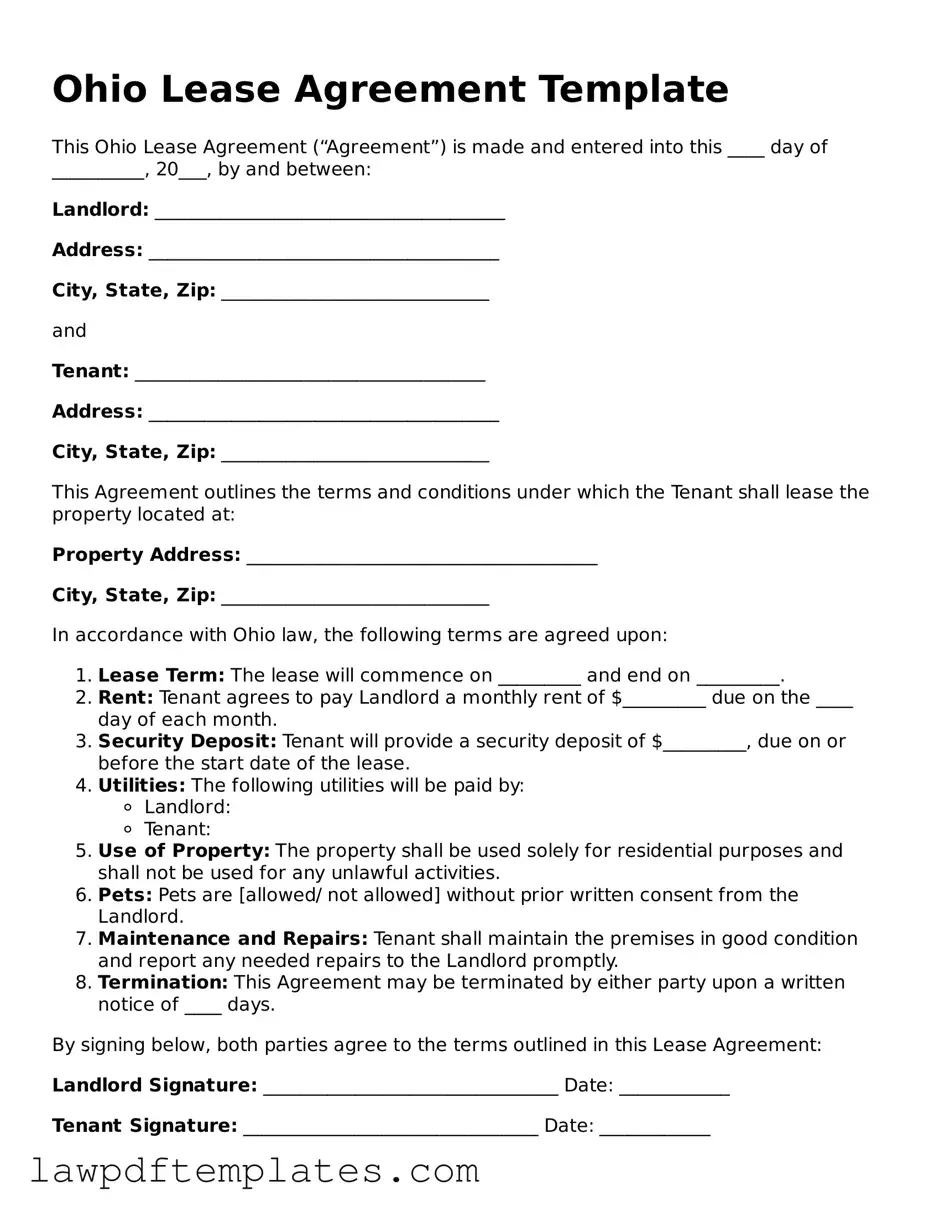Ohio Lease Agreement Template
This Ohio Lease Agreement (“Agreement”) is made and entered into this ____ day of __________, 20___, by and between:
Landlord: ______________________________________
Address: ______________________________________
City, State, Zip: _____________________________
and
Tenant: ______________________________________
Address: ______________________________________
City, State, Zip: _____________________________
This Agreement outlines the terms and conditions under which the Tenant shall lease the property located at:
Property Address: ______________________________________
City, State, Zip: _____________________________
In accordance with Ohio law, the following terms are agreed upon:
- Lease Term: The lease will commence on _________ and end on _________.
- Rent: Tenant agrees to pay Landlord a monthly rent of $_________ due on the ____ day of each month.
- Security Deposit: Tenant will provide a security deposit of $_________, due on or before the start date of the lease.
- Utilities: The following utilities will be paid by:
- Use of Property: The property shall be used solely for residential purposes and shall not be used for any unlawful activities.
- Pets: Pets are [allowed/ not allowed] without prior written consent from the Landlord.
- Maintenance and Repairs: Tenant shall maintain the premises in good condition and report any needed repairs to the Landlord promptly.
- Termination: This Agreement may be terminated by either party upon a written notice of ____ days.
By signing below, both parties agree to the terms outlined in this Lease Agreement:
Landlord Signature: ________________________________ Date: ____________
Tenant Signature: ________________________________ Date: ____________
For any disputes or enforcement issues arising under this lease, parties may refer to Ohio Revised Code §5321: Residential Tenancy Law.
